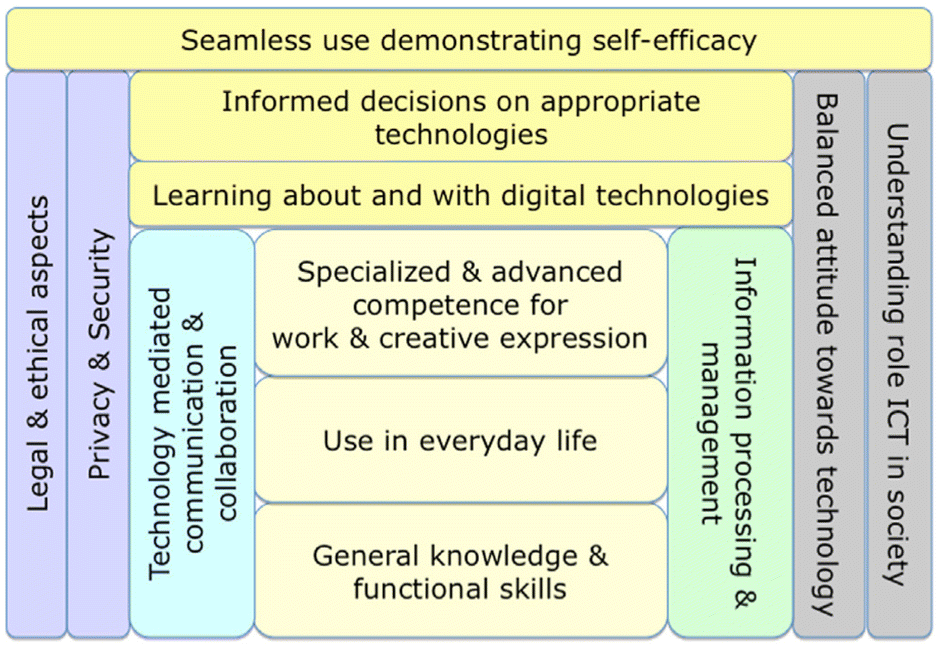I think it’s a little bit simplistic to compare learning to use digital tools with learning to read. Of course you need to able to manage menus, links, settings and much more, just like the reader needs to understand words & sentences, be able to skim and scan and more. The diagram below shows that general skills in the use of digital tools in everyday life is just one element of digital competence. You could say that the general skills are the foundation of digital competence, but to be ‘digitally competent’ requires more than these core competencies. You need supportive competencies (see the pillars), leading to a developed digital competence, illustrated as the roof.
I think Falloon (2020) describes the diagram nicely: ”Janssen et al. (2013) conceptualised each element as a ‘building block’ in establishing holistic digital competence. They organised these into a model that displayed how the elements worked together, resulting in, “seamless use demonstrating self-efficacy” (p. 478) … . Central to the model are ‘core’ competencies that include functional, integrative and specialised uses of digital technology, that are enhanced by improved capabilities in networking (technology-mediated communication and collaboration) and information management (accessing and using digital information). Running parallel to these are what they term ‘supportive’ competencies. These are indicated … by the purple and grey vertical pillars. They represent competencies including understanding legal and ethical considerations, personal and societal impacts and effects, and dispositional elements such as maintaining a balanced and objective attitude towards technology innovation, and a willingness to explore the potential of emerging technologies for personal and professional benefit. As competence develops, personal reflection and increased levels of integration into all aspects of daily activity contribute to greater awareness of how appropriate digital technology use can be leveraged across the lifespan, leading to seamless personal and professionally-beneficial selection and use.”

Janssen et al.’s (2013) elements of digital competence model
References
Falloon, G. From digital literacy to digital competence: the teacher digital competency (TDC) framework. Education Tech Research Dev 68, 2449–2472 (2020).
Janssen, J., Stoyanov, S., Ferrari, A., Punie, Y., Pannekeet, K., & Sloep, P. (2013). Experts’ views on digital competence: Commonalities and differences. Computers & Education, 68, 473–481.
I enjoyed reading your summary of Falloon (2020) (and Janssen et al. (2013)). I agree with you that digital competence or literacy is far more complex than the acquisition of a certain skill or even skill set. It is also connected to the personality and perception. Maybe a little bit like a musical actor. Even if you can act, sing and dance you still need to be a person that feels comfortable on a stage visible to so many.
GillaGilla
Thank you for sharing the digital competence model , legal and ethical aspects are very important to know when we engage in digital spaces
GillaGilla